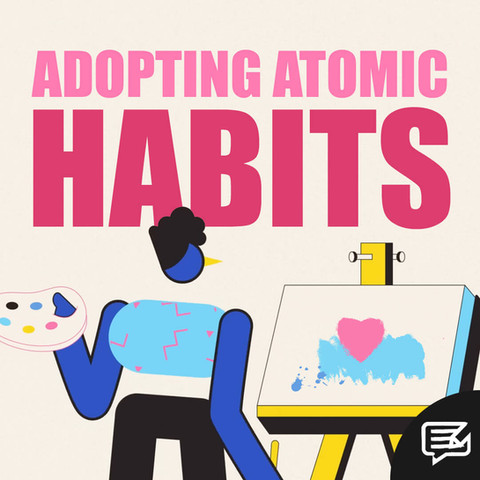
01.11.22
WHAT WE CAN LEARN FROM STEVE JOBS
If you were listing the innovators who had the biggest influence on the world in the past 50 years, the name Steve Jobs would likely come close to the top.
You might be tapping out this list on the Notes app of your iPhone, or dictating it to Siri though your Apple watch. Even if you don’t have a house full of products with a shiny fruit-based logo, Jobs’ impact transforming how we use computers and consume music, news and film in the 21st century is undeniable.



11 years on from his death, Jobs’ life and career continue to be the subject of countless books, films and documentaries. Earlier this year he was even posthumously awarded the Presidential Medal of Freedom.
Walter Isaacson’s biography, simply titled Steve Jobs, paints the Apple founder as a searingly intense perfectionist – part visionary genius who transformed the world around him, part uncompromising tyrant who drove colleagues and peers to fury and despair (it should be noted that some of Isaacson’s less-flattering portrayals of his behaviour have since been heavily disputed).
Isaacson interviewed Jobs more than 40 times and spoke to many of his closest colleagues, friends and family. For Isaacson, Jobs’ personality was reflected in his products like practically no other innovator or business leader before him.
Perhaps the most notable manifestation of this was the Apple philosophy of having closed, end-to-end integration of software and hardware. Jobs’ pursuit of perfection and his control freakery meant he couldn’t stand the open approach employed by Microsoft. Apple machines had to run Apple software and interact with other Apple machines.
ACHIEVING THE IMPOSSIBLE
Jobs pursued his vision with such persistence and ferociousness that those around him coined a phrase to describe his singular focus - the ‘reality distortion field’. If he decided something needed to happen he would disregard obstacles that stood in the way and turn a deaf ear to objections. He would bend reality to his will, regardless of expert opinion and conventional wisdom. When engineers said something couldn’t be done, Jobs told them to try anyway – and often enough he was proved right.
Take, for instance, the challenge of finding a durable screen for the first iPhone. Jobs became obsessed with glass, having ditched the original proposal for a plastic screen because it wasn’t elegant enough. He set about finding a new type of glass that would be strong and resistant to scratches. New York company Corning Glass had long ago developed a process for producing something that would fit the bill – dubbed ‘Gorilla Glass’. The snag? Due to lack of market demand, they had never actually produced it. When Jobs demanded as much Gorilla Glass as they could supply within six months he was told this would be impossible. “Don’t be afraid,” Jobs told the company CEO. “Get your mind around it. You can do it.” And so, of course, they did.
If innovation is all about doing the impossible, then I guess it makes sense that having some form of ‘reality distortion field’ comes in very handy. Like other notable innovators, Jobs was more interested in creating a new reality than accepting the rules and limitations of the one he found.
Debi Coleman, one of the legendary team who developed the first Mac said: “It was a self-fulfilling distortion. You did the impossible because you didn’t realise it was impossible.”
Of course, there is a risk that some may take the wrong lessons from this. Take disgraced Theranos founder Elizabeth Holmes – a Steve Jobs obsessive whose own ‘reality distortion field’ was actually a $9 billion con. The genius of Jobs’ approach was that he didn’t just dispute or deny reality – he successfully created a new one.
SIMPLICITY AND FOCUS
Jobs was clearly an exceptional individual. Not everyone is a Steve Jobs, but there are lessons that we can of learn from him about the nurturing the magic of innovation.
“Simplicity is the ultimate sophistication”, a maxim often attributed to Leonardo da Vinci, was Apple’s design mantra from day one. It informed the way products looked and how they worked. Jobs was obsessed with the idea that design simplicity should make products easy to use. Think about the iPod click wheel, an iconic design feature that made it easy to navigate the ‘thousand songs in your pocket’. If, like me, you had an mp3 player before the iPod, you might still remember the clunky, fiddly buttons required to navigate menus which Apple spared us all from.
This focus on simplicity was crucial not just to what Apple and Jobs did, but also how they went about it. I think this was just as crucial to their success as Jobs’ genius for ideas.
One of the most insightful episodes recounted in Isaacson’s book occurs in 1997, when Jobs returns to a struggling Apple after a decade in exile:
“The product review revealed how unfocused Apple had become. The company was churning out multiple versions of each product because of bureaucratic momentum and to satisfy the whims of retailers, ‘It was insanity,’ Phil Schiller [Apple’s marketing chief] recalled. ‘Tons of products, most of them crap, done by deluded teams.’ Apple had a dozen versions of the Macintosh, each with a different confusing number, ranging from 1400 to 9600. ‘I had people explaining this to me for three weeks,’ Steve Jobs said. ‘I couldn't figure it out.’”
It’s a relatable scenario for anyone who has worked in a large organisation. As companies grow, things become more complex, bureaucracies emerge and the mission gets fuzzy. While Jobs’ force of personality and ruthless streak was undoubtedly key to him driving through his changes, there is something we can all learn from the brilliant simplicity and clarity of his solution:
“After a few weeks Jobs finally had enough. ‘Stop!’ he shouted at one big product strategy session. ‘This is crazy.’ He grabbed a magic marker, padded to a whiteboard, and drew a horizontal and vertical line to make a four-squared chart. ‘Here's what we need,’ he continued. Atop the two columns he wrote ‘Consumer’ and ‘Pro’; he labelled the two rows ‘Desktop’ and ‘Portable’. Their job, he said, was to make four great products, one for each quadrant. ‘The room was in dumb silence,’ Phil Schiller recalled. There was also a stunned silence when Jobs presented the plan to the September meeting of the Apple board.”
Of course, we all know what happened next. Jobs got his way and Apple became the biggest company on the planet, all the while boasting that its entire product range could fit on a single table.
Minimalism and simplicity is a theme that runs throughout the Jobs story, from the design maxim and original Apple marketing philosophy (‘eliminate all of the unimportant opportunities’) to the legacy of insights he shared with others.
"We [Jobs and Google co-founder Larry Page] talked a lot about focus. And choosing people. How to know who to trust, and how to build a team of lieutenants he can count on. I described the blocking and tackling he would have to do to keep the company from getting flabby or being larded with B players. The main thing I stressed was focus. Figure out what Google wants to be when it grows up. It's now all over the map. What are the five products you want to focus on? Get rid of the rest, because they're dragging you down."
It harks back to the ‘hedgehog concept’ articulated by Jim Collins in his influential bestselling book on leadership, Good to Great (covered in one of my previous blogs): Great companies are led by people who can simplify a complex world and articulate a clear idea of what they are best at.
Perhaps surprisingly for a man who has been credited with revolutionising six industries, I think that Jobs’ true genius was the discipline he showed in keeping things simple.

























































